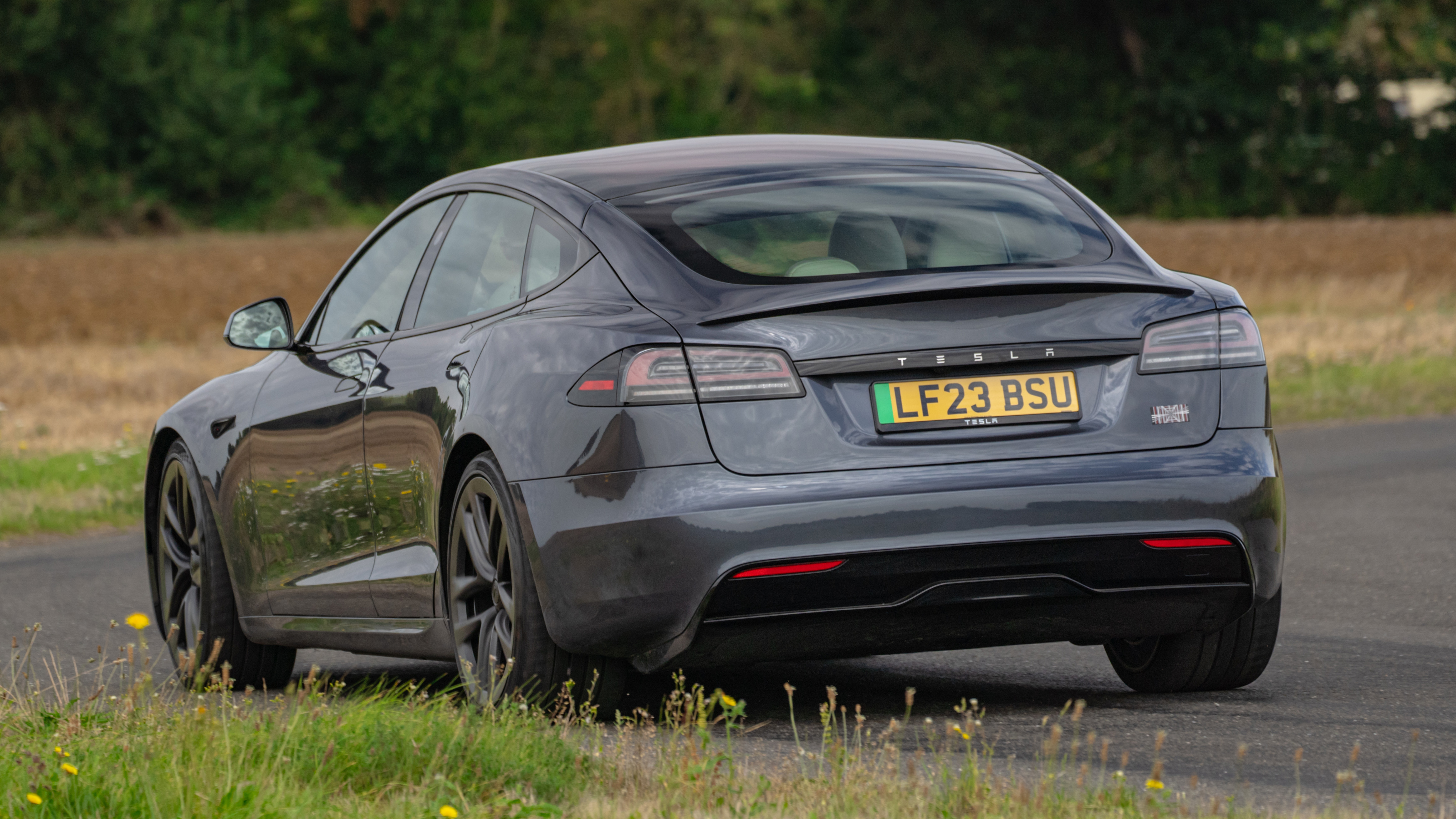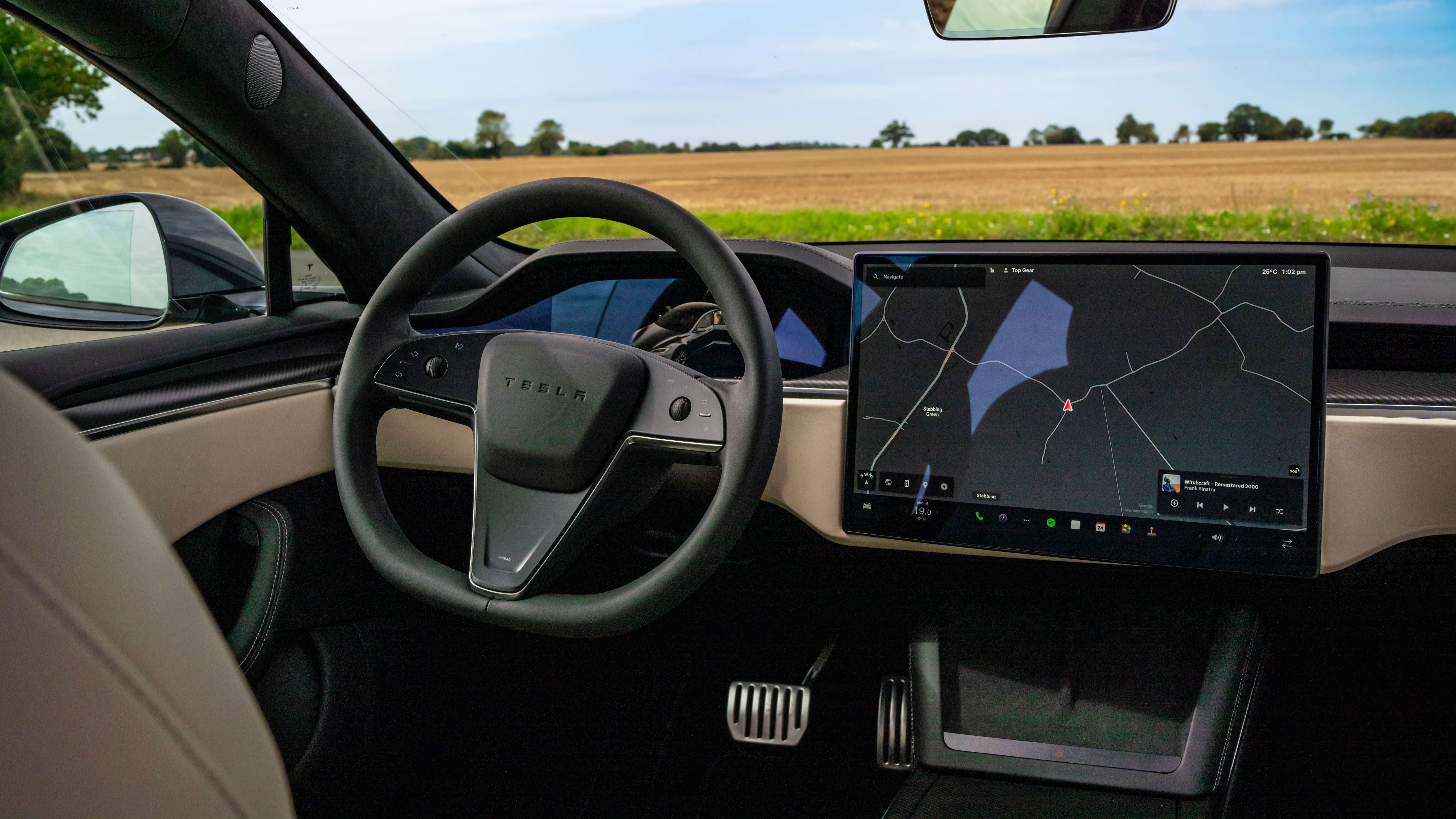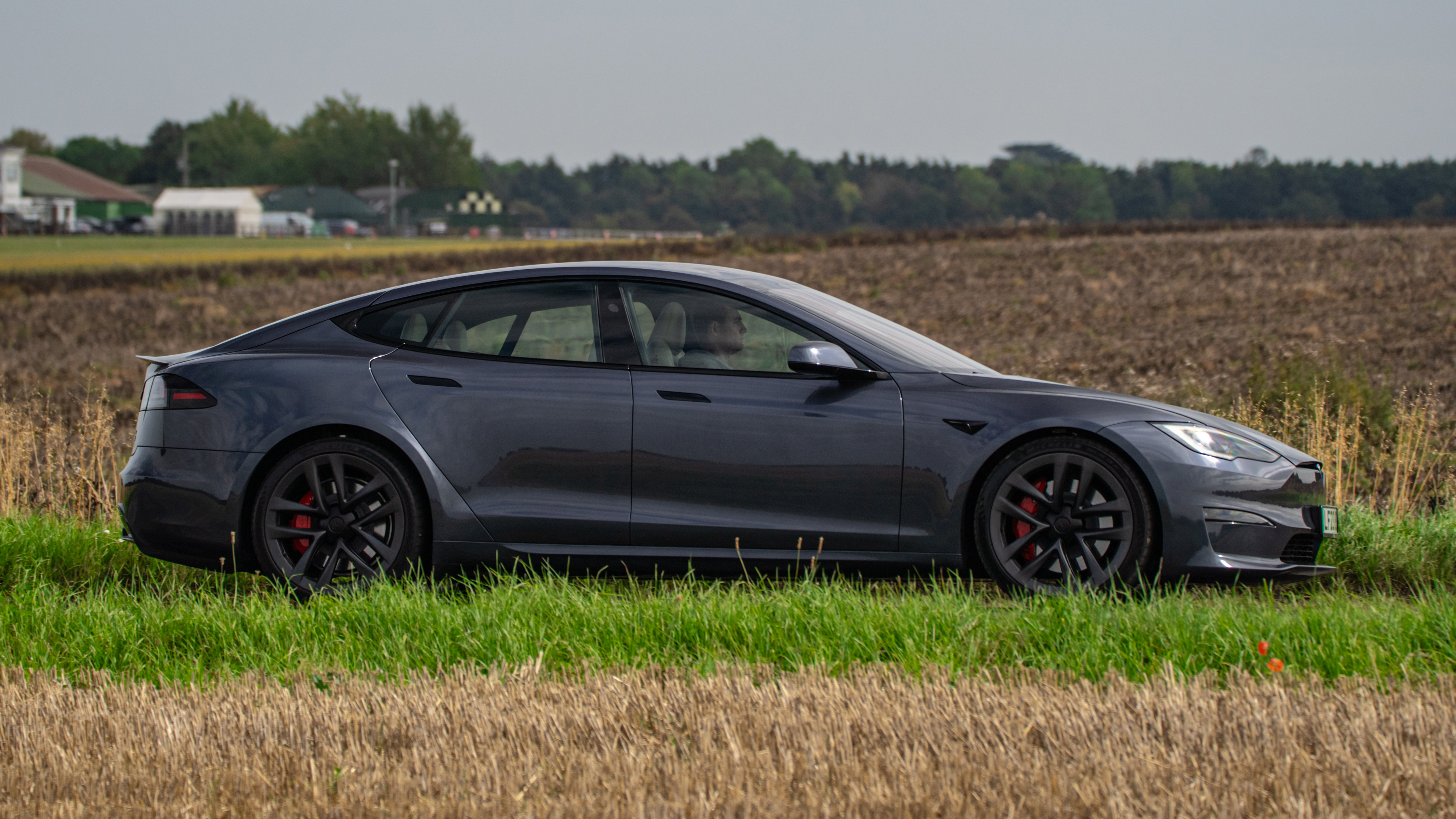
Interior
What is it like on the inside?
It’s impossible to talk about the interior of the Tesla without addressing the elephant in the room – the vast, dashboard-dominating touchscreen that controls virtually every function but for a handful of physical buttons. It used to be a 17-inch portrait affair, but the latest update introduced a landscape screen as per the smaller Model 3.
It handles everything from climate control and audio, via navigation and the hands-free phone, to things like the headlights and sunroof. Happily, despite the size of the screen, the interface/UI is so polished and easy to navigate it’s no more distracting on the move than competitors’ systems. Certain features can also be controlled through voice commands or with buttons on the steering wheel.
Including... the indicators. If you do go down the route of importing a new LHD car over from the continent, be prepared for the fact that Tesla has done away with indicator stalks altogether and replaced them with iffy buttons on the steering wheel. It won't take you long to figure out that putting these controls on a part of the car that (checks notes) moves around is not the wisest thing the company has ever done.
Gosh. Is the build quality as bad as I've heard it can be?
Tesla’s issues with this are well-publicised, but cars we’ve sampled recently have felt more solid and well-built than those we’ve driven in the past. Supple leather, acceptable plastics, textured wood trim on the dash and an Alcantara headliner – these things aren’t without flaw, but for the most part they feel like premium items nowadays. Just as cars that cost this much money should.
That said, the more you spend, the more they struggle. Get into six-figure territory and the Model S feels out of its depth. You can get a new Bentley for that kind of money, after all. And on the Model S Plaid we drove recently in the UK (the LHD car pictured above, as it happens) a rubber seal was peeling away from the door frame despite the car only having a few hundred miles on the clock. The phrase 'hit and miss' springs to mind.
But it's comfy, right?
The driving position is rather good and the seats themselves are comfortable enough. The headrests are of the non-removable variety, so they obscure your view out of the rear-view mirror (which isn’t great to begin with).
Space, though, there’s much of. The boot is big enough to swallow 793 litres of stuff with the seats up, and with the rear bench folded down you can easily get a bike in the back (see our gallery for proof).
The frunk/froot (for ‘front trunk’ or 'front boot'), as Tesla calls it, isn’t massive, but that it’s there at all is a little bonus over petrol- or diesel-powered rivals. The door bins aren't massive, but there's a wireless charging pad that'll house two phones and a centre console with cupholders and a deep storage bin to compensate.
Featured

Trending this week
- Car Review
BMW 1 Series
- Top Gear's Top 9
Nine dreadful bits of 'homeware' made by carmakers






